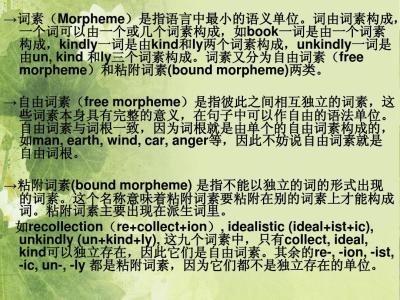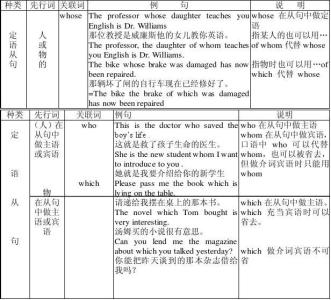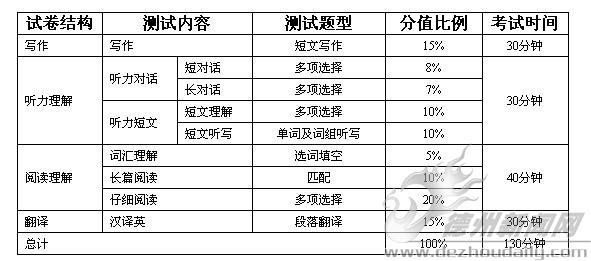by turns 轮流地,交替地
for the time being 眼下,暂时
out of step 不合拍,不协调
in stock 有现货的,有库存的
in return (for) 作为(对…的)报答(或回报、交换)
on the road (to) 在去…的旅途中;在…过程中
as a rule 通常,一般说来
in the long run 终究,从长远看
for the sake of 为了…起见,看在…的份上
in turn 依次地,轮流地;转而,反过来
in vain 徒然,白费力
a variety of 种种,多种多样的
by virtue of 由于,借于
by the way 顺便地,附带地说
by way of 经由,经过;通过…方式
in a way 在某一点上看,在某种程度上
in no way 决不
on sale 出售;廉价出售
on a…scale…规模地,在…规模上
in secret 秘密地,暗地里
in a sense 从某种意义上说
in (good) shape 处于(良好)状态
1. 常考的几种倒装结构
1) 当表示否定或基本否定的词或词组位于句首作状语时用倒装。这类词或词组常用的有:never, nowhere, seldom, rarely, little, hardly, scarcely, barely, not until, not only, by no means, in no time, under no circumstances, under no condition, in no way, in no case, at no time, on no account等。
Never have I heard it before.
Nowhere can I find my lost watch.
Under no circumstance should a student cheat in the exam.
Not only was Churchill a statesman, but also a poet.
Note: 当 “no sooner … than”和“hardly/scarcely … when/before”位于句首时用倒装。该结构表示“一…就…”,在时态上主句一般用过去完成时,when或than引导的从句用一般过去时。
Hardly/Scarcely had I got home when/before the bell rang.
No sooner had the performance begun than the lights went out.
2) 当here, there, then, thus, only, hence, little等副词位于句首,句中主、谓用倒装。
Here is the book for you.
There goes the bell.
Then came the order to take off.
Thus arose the division between the developed and developing countries.
3) 当 “so/such … that”结构中的so或such 位于句首时用倒装。
So cold was it at night that I could hardly fall asleep.
Such was the force of explosion that all the windows were broken.
4) 分句以so, neither, nor, no more等副词位于句首,表明前面句子中所说明的情况也使用于后面的句子时用倒装。
Copper is a good conductor. So are many other metals.
He didn’t see the film last night, neither did she.
2. 强调句型
这里讲的强调句主要是以it为引导词的分裂句。其构成形式为:It is (was) +被强调部分+ that(who, which) + 句子的其他部分。被强调的部分通常为主语、宾语和状语。
It is only when one is ill that one realizes the value of health.
It is what you will do that is essential.
Note:

在被强调部分的后面,一般用that引出句子的其他部分。但是如果强调的部分是表示人的名词,那么也可用who;如果是指物的名词也可用which。
It was Jane that/who lent me the money.
It was this novel that/which they talked about last night.
如果强调的是原因状语从句,只能用because引导,不能由since, as或why引导。
It was because(不用since或as) he had never had the opportunity that John hadn’t learned to drive.
有三类句子成分不可以进行强调,即表语、谓语动词和由though, although, whereas等引导的从句。
It is although he is young that he can speak four languages. (误)
Although he is young, he can speak four languages. (正)
It is whereas he prefers pop song that I like classical music. (误)
I like classical music whereas he prefers pop songs. (正)
3. 使役动词后的宾语补足语
使役动词除了要有宾语之外还要加上宾语补足语才能使句子的意义完整。常用的使役动词有:have, want, make, get, leave, set, let等。可以担当使役动词宾语补足语的有名词,形容词,介词短语,动词不定式和分词等。
All work and no play makes Jack a dull boy.
A good night’s rest will set you right.
Note:
动词不定式可以担当使役动词的宾语补足语,但在make, let, have等使役动词后,动词不定式作宾语补足语时不用to。
He made her give up the opportunity.
What would you have me do?
Her pride would not let her do this.
分词也可以担当使役动词的宾语补足语。现在分词表示正在进行的主动意义,而过去分词表示已经完成的被动意义。
Her remark left me wondering what he was driving at.
The joke set them all laughing.
He managed to get the job done on time.
I’ve just had some new photos taken.
4. 平行结构
在英语中,当两个或两个以上的同等成分(主语,谓语,宾语,表语,定语,状语,宾语补足语等)并列时,要求它们的词性或结构相同,即名词对名词,介词短语对介词短语,分词对分词,句子对句子等等。这就是英语的平行结构准则。一般在使用并列连词如and, but, or, neither … nor, either … or, not only .. but also, both … and, more(less) … than, as well as,rather… than等时,要注意不要违反平行结构准则。
He likes watching TV more than reading books.
The soldier preferred to die rather than surrender.
We saw Tom walking towards the river, taking off his clothes and plunging into the water.
Censorship prevents a movie from being shown or a book being sold.
 爱华网
爱华网


